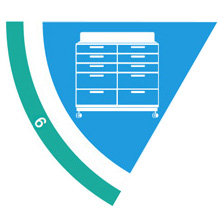
Introduction
Disinfection is the process by which microorganisms such as bacteria are eliminated or reduced. The objective of disinfection is to prevent the spread of infectious diseases by reducing the number of microorganisms present. Disinfection can be achieved in various ways, including the use of disinfectant chemicals such as alcohol-based disinfectants, quaternary ammonium compounds, sodium hypochlorite (bleach), or hydrogen peroxide.
Effective Planning and Disinfection Management
This would be the planning. We need to develop a detailed plan for management and disinfection. It is important to identify high-risk areas, determine the necessary equipment, outline the procedures to be followed, and define the responsibilities of the individuals involved in the disinfection process.
- This is training. It involves ensuring that the personnel responsible for management and disinfection are trained in good hygiene and disinfection practices. They should be familiar with the procedures, the cleaning/disinfection products to be used, and the safety precautions to be taken.
- This is personal hygiene. We should encourage and maintain good personal hygiene practices among the staff. This includes habits such as regular handwashing with soap, the use of hand sanitizers, and wearing appropriate protective clothing.
- This is regular cleaning. It entails establishing a regular cleaning schedule for all surfaces and high-risk areas.
- This is proper disinfection. It involves using appropriate disinfectants to kill germs and reduce the risk of infection.
- This is ventilation. We should ensure good ventilation in indoor spaces to facilitate the circulation of fresh air.
- This is waste management. We need to implement an appropriate system for waste management, ensuring the safe and hygienic disposal of potentially contaminated materials.
- This is monitoring and evaluation. It entails establishing regular monitoring and evaluation procedures to assess the effectiveness of the management and disinfection measures. Adjustments should be made if necessary.
- This is raising awareness among staff and relevant individuals about hygiene practices.
- This is compliance with regulations. We must ensure that regulations regarding hygiene are adhered to and that standards are upheld. Therefore, it is important to stay informed about updates and recommendations from health authorities.
The uses/benefits of disinfectant
Eliminates germs and bacteria, ensuring a clean and hygienic environment for everyone.
Surface Disinfection: This category involves the disinfection of surfaces such as countertops, doorknobs, switches, phones, keyboards, faucets, etc. There are specifically formulated disinfectant products to eliminate germs and bacteria on surfaces. These products can be disinfecting wipes, sprays, or disinfectant solutions to be used with a clean cloth.
Hand Disinfection: This refers to the disinfection of hands to eliminate germs and bacteria that may be present. The use of alcohol-based hand sanitizers is common in this category. Hand sanitizers are usually available as gels or liquid solutions. It is recommended to rub the hands with the sanitizer for at least 20 seconds until it dries.
Medical Instrument Disinfection: This category primarily concerns healthcare facilities and medical professionals. It involves the disinfection of medical instruments such as scalpels, syringes, injection devices, probes, etc. In this case, more complex disinfection procedures may be required, such as the use of autoclaves, dry heat sterilizers, or specific chemical agents.
To conclude, disinfection is essential to ensure good hygiene in the workplace, and it requires precise steps to be properly carried out.
links:https://www.lalema.com/










































































